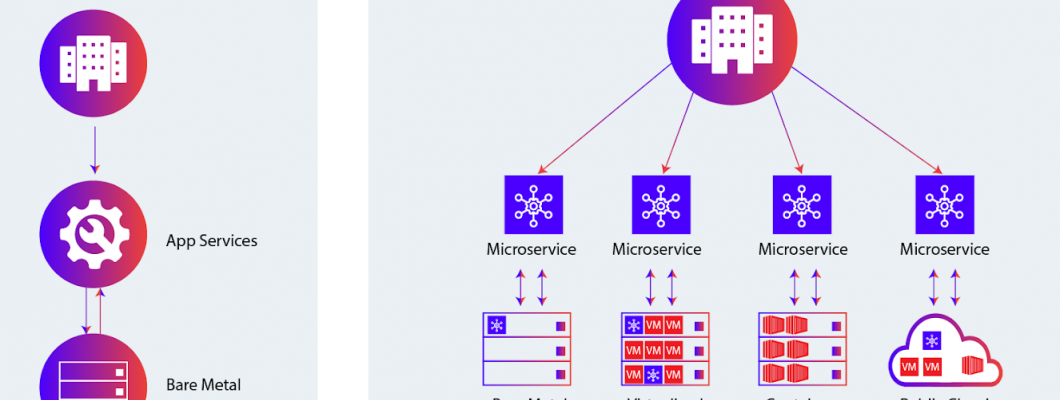
Introduction
In the era of cloud-native development, building applications that are scalable, agile, and easy to maintain is not just a preference—it’s a necessity. As businesses strive to deliver seamless digital experiences, the combination of microservices architecture and API-driven communication has emerged as a gold standard for backend development.
This blog explores how microservices and APIs work together to create modular, scalable systems, their benefits, real-world use cases, and best practices for implementation.
What Are Microservices?
Microservices is an architectural approach where an application is broken down into a collection of loosely coupled services. Each service is responsible for a single functionality and can be developed, deployed, and scaled independently.
Key Features of Microservices:
Independently deployable services
Decentralized data and logic
Technology agnostic — different services can use different programming languages or databases
Failure isolation — issues in one service don’t affect the entire system
For example, an e-commerce platform may have microservices for user authentication, product catalog, cart, payments, and order processing—all functioning independently.
APIs: The Glue of Microservices
APIs (Application Programming Interfaces) act as the bridge between microservices. They define how services communicate, share data, and trigger actions. Without APIs, microservices wouldn't be able to talk to each other.
There are different types of APIs used in a microservices architecture:
RESTful APIs: Widely adopted, easy to implement over HTTP
GraphQL: Allows flexible data fetching
gRPC: High-performance RPC framework often used for internal service communication
APIs make the system extensible, enabling third-party integrations and frontend-backend communication.
Why Use Microservices with APIs?
When combined, microservices and APIs provide a highly modular, efficient, and scalable architecture. Here’s why modern applications are moving toward this model:
1. Scalability
Each microservice can be scaled independently based on its workload. For instance, your payment service might experience more load during sales—scale just that service without affecting the rest.
2. Faster Development and Deployment
Teams can work on different services simultaneously, speeding up development cycles. Independent deployments mean fewer dependencies and faster feature rollouts.
3. Resilience
A bug or crash in one service won’t bring down the whole system, making your application more robust and fault-tolerant.
4. Flexibility in Technology Stack
Different services can be built with the best-suited technologies. For example, a real-time notification service might use Node.js, while your data-heavy analytics service uses Python.
5. Better DevOps and CI/CD Integration
Microservices align perfectly with DevOps practices. CI/CD pipelines can be set up for each service independently, making automated testing and deployment easier.
Best Practices for Building Microservices-Based Backends
1. Use an API Gateway
An API gateway acts as a single entry point for client interactions. It handles request routing, authentication, rate limiting, and logging.
Popular tools: Kong, NGINX, AWS API Gateway
2. Containerize Services
Use Docker to package each service and Kubernetes to manage container orchestration. This ensures consistent environments across development, testing, and production.
3. Service Discovery
Use tools like Consul, Eureka, or Istio to automatically detect and connect services.
4. Secure Your APIs
Use authentication methods like OAuth2, JWT, and API keys to protect APIs. Also, enable HTTPS for secure transmission.
5. Implement Centralized Logging & Monitoring
Use observability tools to track logs, performance, and issues across services.
Tools: ELK Stack, Prometheus, Grafana, Jaeger (for distributed tracing)
6. Manage Configuration Properly
Use centralized configuration management tools (like Spring Cloud Config, and HashiCorp Vault) to keep sensitive data out of your codebase.
Challenges You Should Expect
Complexity
Managing multiple services requires orchestration, service discovery, and robust monitoring. Start small and scale up as needed.
Data Consistency
In microservices, each service may have its database. Ensure eventual consistency using patterns like event sourcing or sagas.
Network Latency
Microservices rely on APIs over the network, which introduces latency. Optimize with caching (e.g., Redis) and consider using gRPC for faster internal communication.
Real-World Use Cases
Netflix
Netflix pioneered microservices to support its global user base, allowing teams to innovate and deploy faster without impacting other services.
Amazon
Amazon’s vast product catalog and order systems are powered by independent services, enabling dynamic scaling during high-traffic events.
Uber
Uber’s microservices handle real-time features like driver tracking, ride requests, payments, and user authentication—each independently.
Microservices + APIs = A Scalable Future
Microservices provide the modularity and independence developers crave, while APIs bring everything together through seamless communication. Together, they offer:
Faster product iteration
Improved fault tolerance
Easier team collaboration
Modern integration with cloud-native ecosystems
For organizations aiming to future-proof their architecture, moving to a microservices and API-first backend is no longer optional—it’s the standard.
Conclusion
Microservices and APIs form the core of modern backend systems—offering flexibility, performance, and scalability that monolithic architectures simply can’t match. Whether you're a startup or an enterprise, adopting this approach will unlock new levels of innovation and operational efficiency.
But remember: success lies in strategic implementation. Start with a solid foundation, leverage the right tools, and evolve your architecture as your application grows.

Leave a Comment